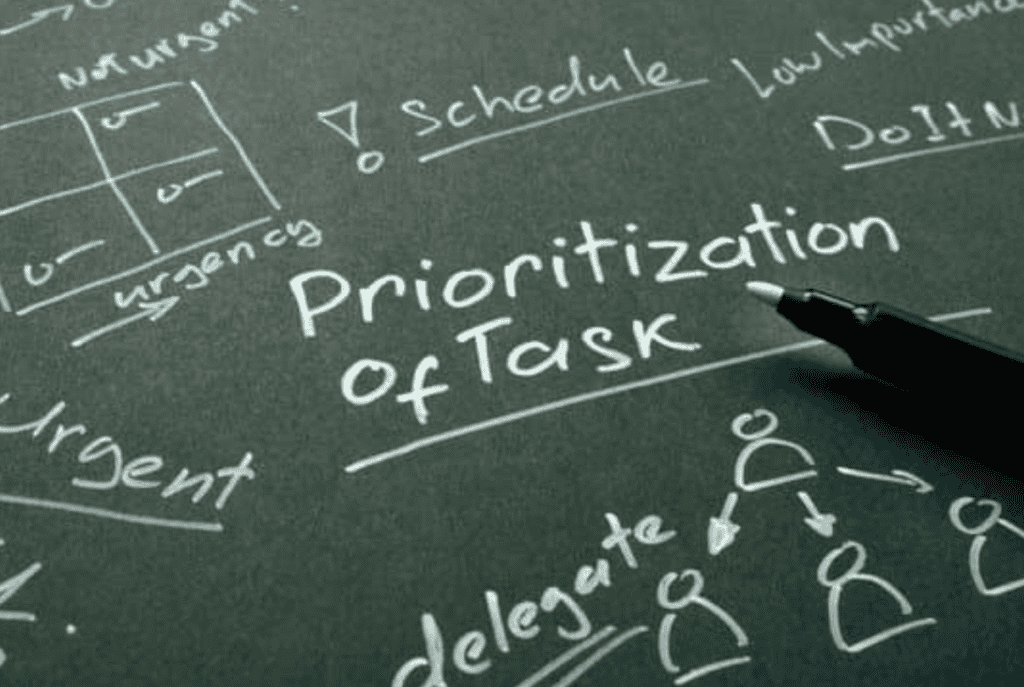Whether you’re looking for an easy way to file your individual tax return or a simple solution for a complex work project, the ability to prioritize tasks is a keystone habit. Knowing the secret to effective task prioritization – how to effectively sort and tackle tasks streamlines your workflow and enhances your output on the job.
Table of Contents
However, it will also benefit you in every aspect of your life, from dating to maintaining your fitness. The question is, how do you do it?
This guide covers eight techniques you can use to prioritize tasks more effectively, ensuring every effort you make aligns with your strategic goals.

Strategies for Effective Task Prioritization
Eisenhower Matrix
The Eisenhower Matrix, also known as the Urgent-Important Matrix, is a timeless tool for distinguishing between tasks that need immediate attention and those that can wait. Start by categorizing tasks into four quadrants:
- Urgent and important
- Important but not urgent
- Urgent but not important
- Neither urgent nor important

This gives you a picture of your daily activities, helping you assign your time according to each task’s true necessity and impact.
Time Blocking
Time blocking involves dedicating specific chunks of time to different groups of tasks, helping to manage workloads and minimize downtime. By planning your day around these time blocks, you can focus intensely on one thing at a time, increasing your concentration and efficiency.
ABC Priority Method
The ABC priority method categorizes tasks based on their importance—’A’ for critical tasks, ‘B’ for important tasks, and ‘C’ for tasks that are nice to do. This simple yet effective method keeps your to-do list under control by limiting the number of tasks in each category and clarifying your priorities.
Ivy Lee Method
This century-old technique involves listing six important tasks to be done the next day, ranking them in order of their true importance. When tomorrow comes, focus on the first task until finished, then move on to the next, and so on. This simplifies daily planning and ensures you’re always moving toward critical goals.
Pareto Principle (or, the 80/20 Rule)
The Pareto Principle suggests that 80% of results come from 20% of efforts. Identifying which tasks fall into this 20% enables you to allocate resources and time more effectively, ensuring the most impactful activities receive the attention they deserve.
This approach is especially useful in managing large projects or portfolios where resource allocation needs are fundamental to maximizing returns.
Getting Things Done (GTD)
David Allen’s Getting Things Done methodology is a holistic approach to task management. Start by writing down all tasks rather than keeping them in your head. Then divide them into actionable parts. After clearing the mental clutter, prioritize tasks based on what can be acted upon immediately.
MoSCoW Method
The MoSCoW method helps in project management by categorizing tasks into four groups:
- Must have
- Should have
- Could have
- Won’t have
This is particularly useful in agile project environments where flexibility and adaptability are key. It allows teams to adjust their focus based on the project’s evolution and stakeholder feedback.

Kanban Boards
Kanban boards visually manage workflow and tasks using cards and columns. Each card stands for a task, and each column shows a different step in the process, making it easy to track team progress. It’s particularly effective when you have many tasks and the status of each is crucial to the overall operation.
Effective task prioritization is a strategic advantage that’s worth developing. Whether you’re an individual looking to optimize your daily routine or a team leader striving to enhance project outcomes, these eight techniques offer a roadmap to more structured and impactful task management.
Implement them to transform chaotic workloads into organized systems that drive success and efficiency.



